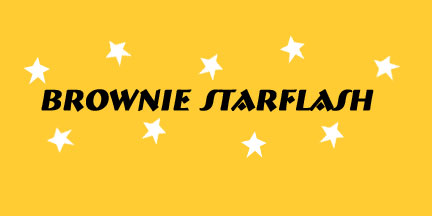
Mom and
Dad's camera..
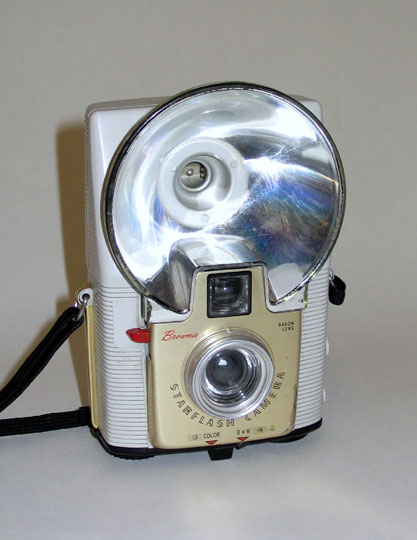
This is the first camera I ever used. Well, not this very one, but one just like it.
It was the only camera my parents had way back when. I got this particular one in a bargain store.
The one I used as a kid was black. At the store where I bought this one they had a black one, but it
was broken. They wanted a buck more for it too. I guess even Kodak's are more valuable in a
black body. Hey, just like Nikon! Mom used to loan me the camera for field trips when
I was in grade school. I am certain that I took more photos with it than the rest of the family combined.
I don't know what happened to that old Starflash the folks had. Probably ended up in a yard sale with
a 25 cent price tag on it. That happened to a lot of family cameras. You can now buy them back on eBay.
They're the ones described as "antique" and, most important of all, "rare".
Oh well, three bucks ain't bad for a "rare antique".
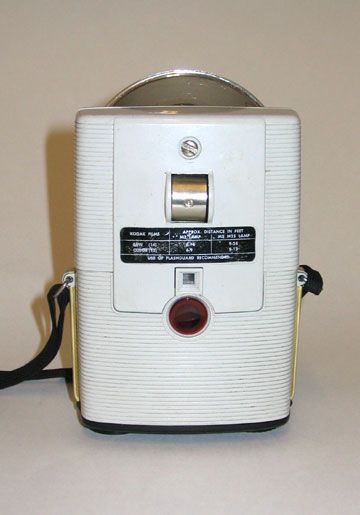
The back side has a quickie guide for flash bulb distances. The silver thing
above the flash guide is to eject spent flash bulbs (M2), and the tiny square
hole below it is the viewfinder. The ruby window shows you the frame
number of your (now) $5.00 roll of 127 film. You can still get it. Efke makes
it and JandC sells it. There may still be other brands, I don't know. The shutter has
double exposure prevention, so you won't waste film. The film wind is on the bottom.
This camera has two apertures, one for black and white and one for color films.

You load the film by turning a little switch on the bottom and pulling out the film
cartridge. There are a couple of small arrows to tell you what goes where.
Surprisingly, there is no sticker telling you to use Kodak film on this camera.
Most older Kodak's tell you what they want you to use.
I loaded up with Efke 100 and took the Starflash for a test drive. The film was
developed in Gainer's PC-TEA and printed on Arista EDU MC RC.
I was pleasantly surprised with this little beater....

This is the White Bird grade visitors stop. It tells about the grade, of
course, but it also tells about a battle near this spot between the U.S.
Cavalry and the Nez Perce tribe. The boys in blue lost 36-0.
The grade is somewhat steep at 3000 feet in 7 miles. This is the
only shot I cropped. The rest are full frame.
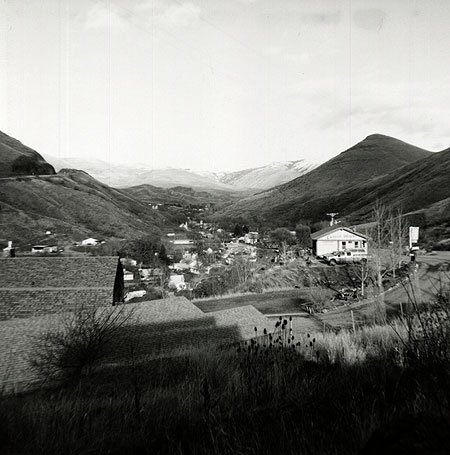
Sorry, this is not a good shot. I couldn't find the button for
the telephoto lens on the camera, so it's quite distant. This
is the town of Whitebird. It's all there in the middle of the
photo. About half a mile long and 200 yards wide. That's it.
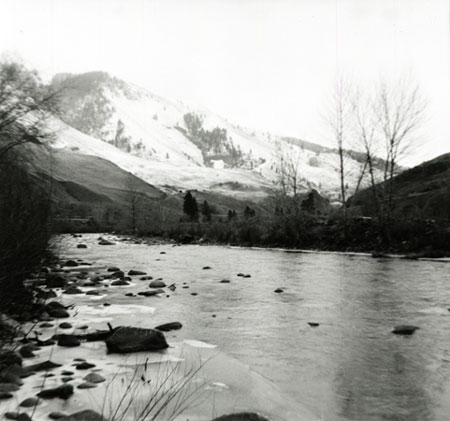
This is the Little Salmon River, about ten miles up creek from
where it runs into the main Salmon. The hills here become
mountains a little farther north and become the Salmon
River gorge.
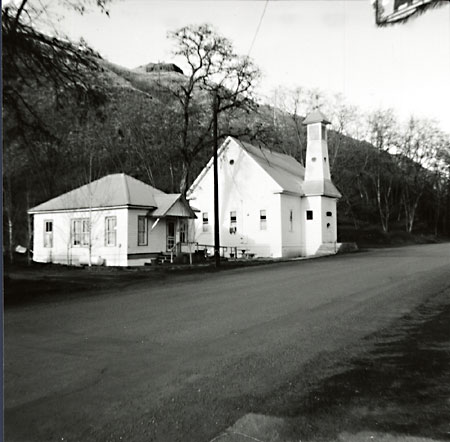
One of the old Whitebird churches, and next to it is the
(former) library. The new library is one of those portable
buildings like you see on a construction site. I can't see
how that could be an improvement. (I don't know what
that is in the upper right corner).
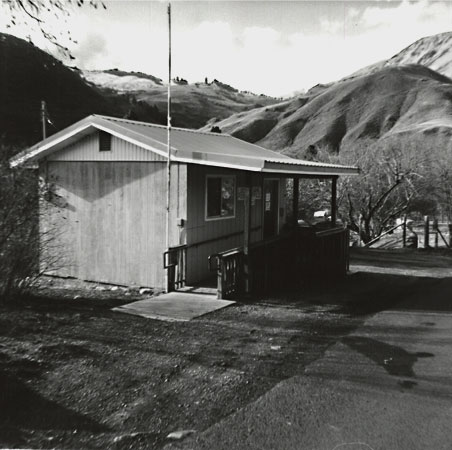
This 160 square foot building is an official United States Post
Office. Really! Open every day but Sunday. Many people's
bedrooms are bigger than this.
It has no running water and NO toilet, but it does have a
computer. A wonderful contrast between 1905 and 2005.
Oh yeah, it does have a privy out back. Something I'm sure
the postmistress is just diggin' to use on cold February mornings.
www.deansphotographica.com
www.deandofidaho.com
deanw@bmi.net
4-05
© 2005 Dean Williams